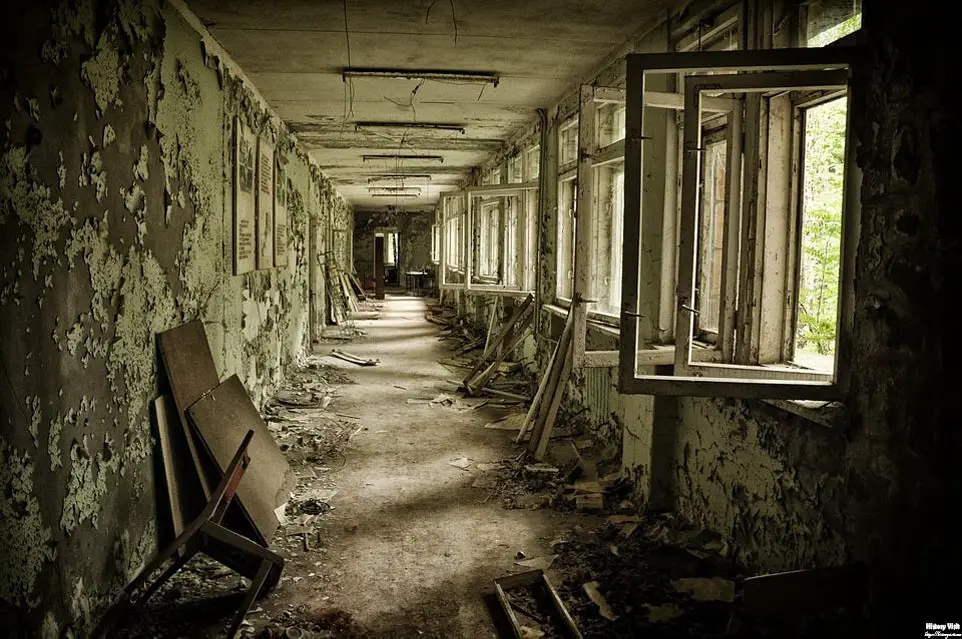Pripyat, Ukraine: The Ghost City Frozen in Time

Introduction
Pripyat, Ukraine, once a thriving city, now stands as a haunting reminder of the Chernobyl disaster. Established in 1970 to house workers of the Chernobyl Nuclear Power Plant, Pripyat was abandoned in the aftermath of the catastrophic explosion on April 26, 1986. This sudden evacuation turned a bustling community into a ghost city, frozen in time. The story of Pripyat is one of rapid development, sudden abandonment, and enduring intrigue, capturing the world’s attention as a symbol of human resilience and the dangers of nuclear power.
The Chernobyl disaster was one of the most significant nuclear incidents in history, leading to widespread radioactive contamination and long-term environmental and health impacts. Pripyat, located just three kilometers from the power plant, bore the brunt of this catastrophe. The city’s evacuation was a monumental task, involving the relocation of nearly 49,000 residents within a matter of hours, leaving behind their homes, possessions, and way of life.
This article explores the details of the Chernobyl explosion, the evacuation of Pripyat, the Soviet government’s response, and the lasting impact on the city’s former residents. Through these lenses, we gain a deeper understanding of the events that led to the abandonment of Pripyat and the enduring legacy of this ghost city.
The Chernobyl Explosion

The Chernobyl disaster occurred during a late-night safety test at Reactor 4 of the Chernobyl Nuclear Power Plant. On April 26, 1986, a sudden surge of power led to explosions and a fire that released massive amounts of radioactive particles into the atmosphere. The explosion blew off the reactor’s roof, exposing the core and sending a plume of radiation across Europe. This event is considered the worst nuclear power plant accident in history, both in terms of cost and casualties.
Immediate responses to the explosion were chaotic and inadequate. Plant workers and firefighters, unaware of the radiation levels, worked tirelessly to contain the fire and prevent further explosions. Many of these first responders suffered from acute radiation sickness, and several lost their lives due to the intense exposure. The initial lack of information and the Soviet government’s delay in acknowledging the severity of the disaster exacerbated the crisis, leading to widespread confusion and panic.
The radioactive fallout from the explosion had devastating effects on the environment and human health. Large swathes of land around Chernobyl became uninhabitable, and radioactive particles spread across Europe, prompting evacuations, agricultural bans, and long-term health monitoring. The disaster highlighted the catastrophic potential of nuclear energy, leading to significant changes in nuclear safety protocols worldwide.
Evacuation of Pripyat
The evacuation of Pripyat was a monumental and unprecedented task. On the morning of April 27, 1986, the day after the explosion, Soviet authorities began the process of evacuating the city’s residents. Initially, the evacuation was announced as a temporary measure, with residents told to bring only essential items and expect to return in a few days. However, it quickly became apparent that the radiation levels made it unsafe for anyone to return.
The logistics of evacuating nearly 49,000 people in a matter of hours were daunting. Buses, trucks, and other vehicles were mobilized to transport residents to nearby towns and villages. The evacuation was conducted with remarkable efficiency, given the circumstances, but it left little time for residents to gather their belongings. Many left behind their homes, pets, and personal items, expecting to return soon.
Personal accounts from evacuees reveal the emotional and psychological toll of the sudden abandonment. Families were uprooted from their lives, losing their homes, jobs, and sense of community. The trauma of leaving everything behind and the uncertainty of the future weighed heavily on the evacuees. Despite the efforts to relocate them, many faced challenges in adapting to new environments and dealing with the long-term health effects of radiation exposure.
Government and Military Response
The Soviet government’s response to the Chernobyl disaster was characterized by initial secrecy and eventual mobilization of resources. In the immediate aftermath of the explosion, there was a deliberate downplaying of the incident’s severity. It wasn’t until increased radiation levels were detected in Sweden and other European countries that the Soviet government acknowledged the disaster publicly, several days later.
Once the scale of the disaster became undeniable, the Soviet government and military launched extensive efforts to contain the radiation and mitigate the effects. The “liquidators,” a term used for the hundreds of thousands of military personnel, scientists, and volunteers, were deployed to the site to clean up radioactive debris, build a concrete sarcophagus over the reactor, and decontaminate affected areas. These liquidators played a crucial role in preventing further radiation release, but many suffered severe health consequences due to their exposure.
The response also involved relocating residents from the surrounding areas, creating the Chernobyl Exclusion Zone, and implementing long-term monitoring of environmental and health impacts. Despite the efforts, the disaster exposed significant flaws in nuclear safety protocols and emergency preparedness. The Soviet government’s handling of the crisis, marked by initial secrecy and subsequent large-scale mobilization, had lasting political and social repercussions.
Conclusion

The story of Pripyat is one of abrupt abandonment and enduring mystery. The Chernobyl disaster transformed a vibrant city into a ghost town, leaving behind a haunting legacy. The rapid evacuation, the immediate and long-term health impacts, and the ongoing fascination with the site reflect the profound consequences of one of history’s most significant nuclear accidents.
Pripyat stands as a stark reminder of the risks associated with nuclear energy and the importance of safety and transparency in its management. The abandoned city, frozen in time, continues to attract researchers, tourists, and those seeking to understand the human cost of the disaster. The lessons learned from Chernobyl have shaped nuclear safety protocols and emergency response strategies worldwide.
As we reflect on the events that led to the abandonment of Pripyat, we are reminded of the resilience of the human spirit and the enduring quest for knowledge and understanding. The ghost city serves as a testament to the past and a warning for the future, highlighting the need for vigilance and care in harnessing the power of nuclear technology.


